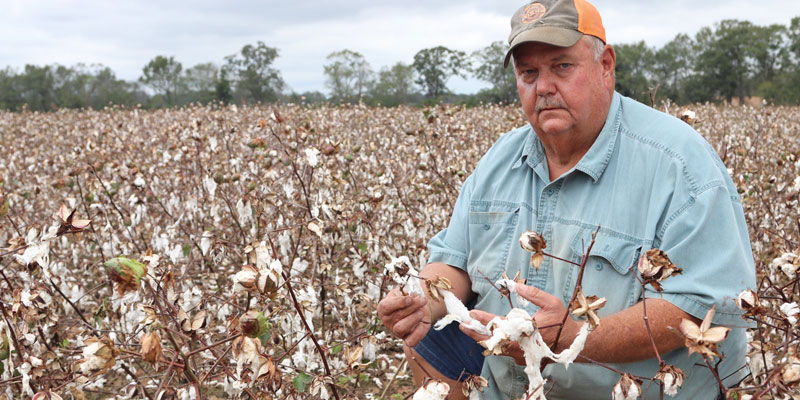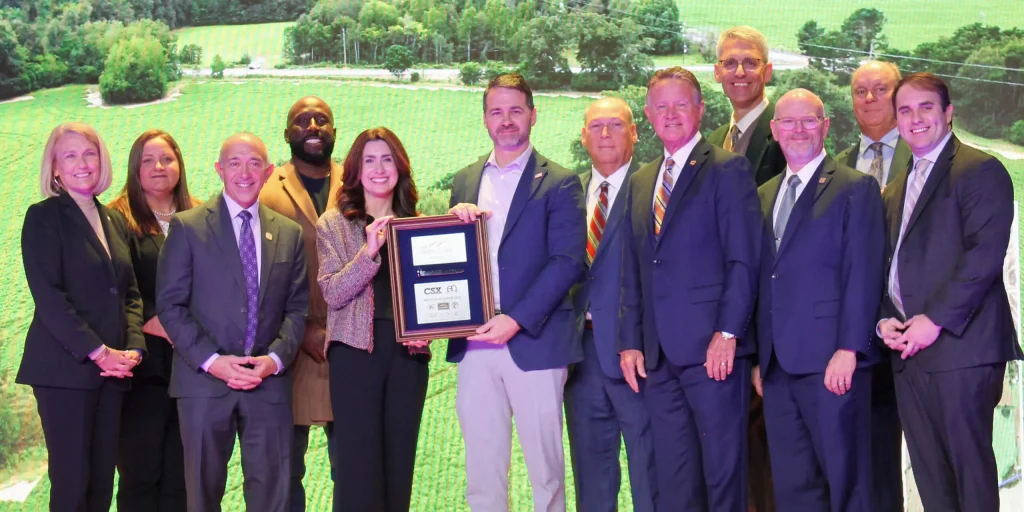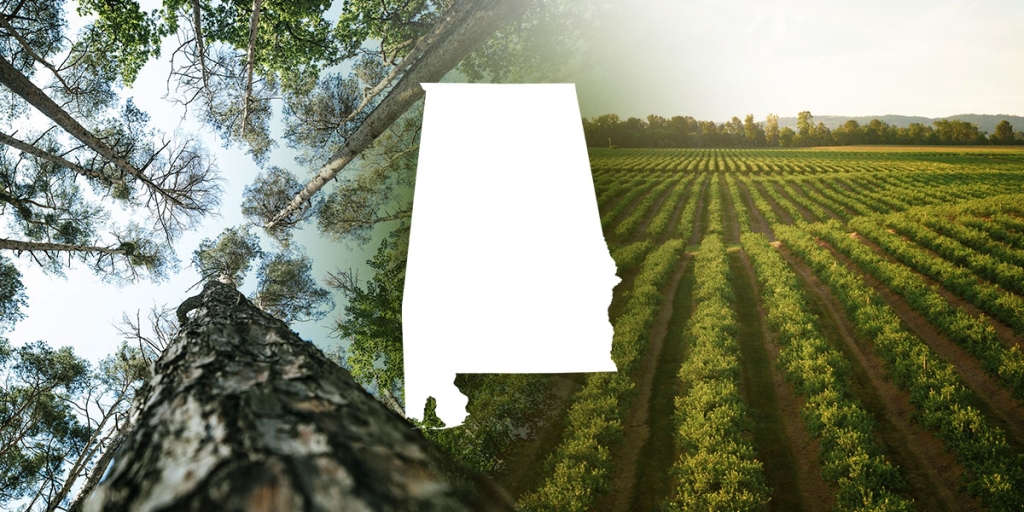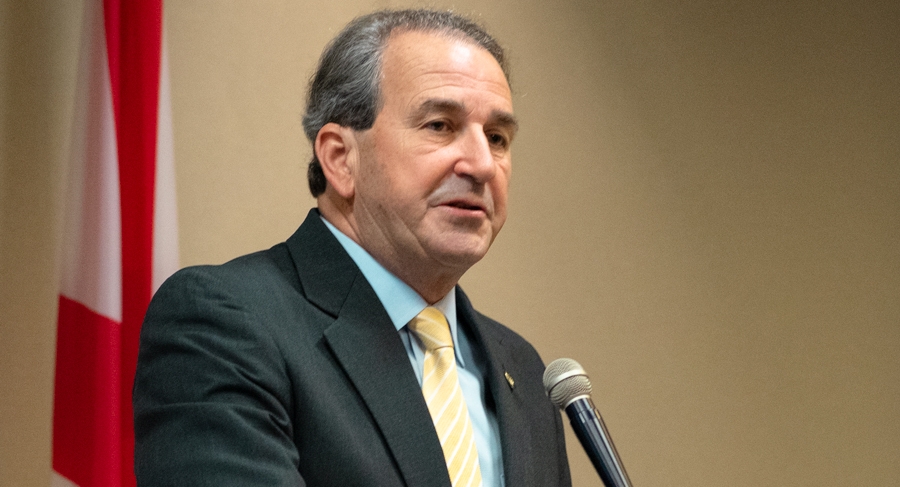When Hurricane Michael hammered the southeast corner of Alabama Wednesday, the storm ripped apart what some farmers predicted was the area’s best cotton crop in years, says a release by the Alabama Farmers Federation.
The then-Category 4 hurricane sustained winds of 155 mph as it landed in Mexico Beach, Florida, and packed a powerful punch when it rolled through Fred Helms’ Rehobeth farm about 70 miles from the coastline in Houston County.
“This year yields looked good for peanuts and cotton, probably our best in 10 years,” Helms said. “The cotton would have picked 1,000 pounds an acre before. It might pick 350 pounds now.”
Helms added that he was grateful to have picked about 250 of his 800 acres of cotton planted this year ahead of the hurricane. Approximately 30 additional acres were ready to pick, but Helms ran out of time before Michael made landfall.
The hurricane’s devastation continued into Henry and Geneva counties, scattering cattle, downing fences and trees and destroying important structures.
In Geneva County, wind even ripped Jason Parker’s 50-foot by 100-foot barn from its foundation, wrapping the metal around grain bins and destroying critical equipment.
“In southeast Alabama, our farmland is predominantly non-irrigated, so we depend on Mother Nature,” Parker explained. “She was pretty good to us until this storm.”
Wind, more-so than water, wreaked the most havoc on Alabama farmland, as Parker outlined. Of his 1,000 acres of cotton, an estimated 800 acres is a total loss, since the defoliated cotton was vulnerable to devastating wind damage.
Parker noted that he should have defoliated the remaining cotton a week ago but tried to leave foliage for protection. However, the wind was too much to overcome regardless – nearby Dothan received wind gusts above 60 mph.
“When you get wind like we had, it doesn’t matter how much protection you have,” Parker added.
Helms is hopeful that there is less damage to his peanut crop than the cotton. Before Michael, Helms had gathered about 500 of his 1,100 acres of peanuts. About 100 acres were plowed up immediately before the storm hit but should be fine, he said.
While soybeans are planted less frequently in the Wiregrass, wind-whipped stalks could also create challenges at harvest for that crop.
West of Helms, and just outside the hurricane’s direct path, Sammy Gibbs of Escambia County finished gathering peanuts two short days before the storm struck. Unfortunately, he was not as lucky with his cotton, only having picked 456 of his 1,156 planted acres.
“Our cotton crop in general was going to be fair,” he remarked. “The cotton we picked early was light because of excess rain from Tropical Storm Gordon in early September. What should have been 1,000 pounds of cotton per acre was closer to 650-700 pounds per acre.”
In addition to yield loss, farmers expect the remaining cotton’s quality to suffer, according to the Alabama Farmers Federation’s Cotton, Soybean and Wheat & Feed Grain divisions director Carla Hornady.
“High wind and rain can fill cotton with debris, reducing quality,” Hornady detailed.“Recovery won’t be easy, and there are still crops to gather.”
The threat of severe weather is no longer hovering over AL02, but people in the Wiregrass woke up today facing terrible damage from #HurricaneMichael. My family’s prayers are w/ our neighbors in the area. My office is ready to help however we can as we work through this together. https://t.co/eOLVexpzB0
— Rep. Martha Roby (@RepMarthaRoby) October 11, 2018
Alabama officials have expressed their concern for the Wiregrass and the area’s farmers, making it clear that the state’s prayers are with them and that no effort will be spared to make available all possible state and federal resources.
“Thankful for first responders & those working to repair the damage of #HurricaneMichael. My thoughts and prayers go out to all of those affected in #Alabama & throughout the Southeast,” Senator Richard Shelby said in a tweet.
Terrible to hear these reports from our Alabama farmers. We need to ensure impacted farmers receive appropriate federal assistance. #HurricaneMichael https://t.co/qQsBHVs2ve
— Rep. Bradley Byrne (@RepByrne) October 11, 2018
Prayers for all of our farmers who were hit during harvest! #Ag https://t.co/T5iPIi0cgC
— Mike Rogers (@RepMikeRogersAL) October 11, 2018
According to the Alabama Daily News, Governor Kay Ivey is personally surveying the damage Thursday afternoon.
En route to the Wiregrass w/ @GovernorKayIvey as she tours storm damage from Hurricane Michael. Was scheduled to shadow her in Mobile today for a profile story but Mother Nature had different plans. pic.twitter.com/Nj08vOpYvh
— Todd Stacy (@toddcstacy) October 11, 2018
Ivey spoke by phone with President Donald Trump on Wednesday regarding the hurricane’s impact, and, per the Alabama Daily News, “has been communicating via phone & text w/ Alabama EMA Director Brian Hastings and local lawmakers about various damage throughout the area and will get an updated briefing later today at the Dothan/Houston County emergency management office.”
Sean Ross is a staff writer for Yellowhammer News. You can follow him on Twitter @sean_yhn













